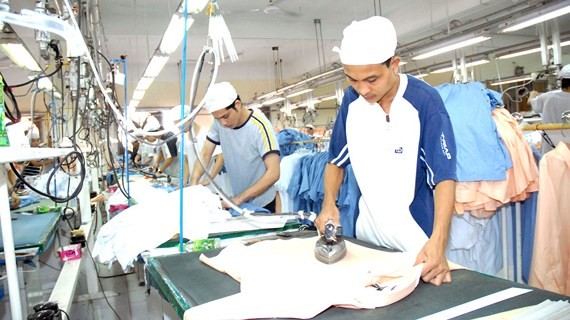
By September, 2018, the country’s export turnover of garment and leather reached over $10 billion; however, the leather industry of Ho Chi Minh City has seen a decline in leather export.
Specifically, by September, the city’s garment export turnover hit $4.13 billion, a year-on-year increase of 3 percent while footwear export was just $1.8 billion, falling by 1 percent. In July, garment export was $3.3 billion, a rise of 5.9 percent while footwear export was $1.478 billion, dropping by 3.4 percent. In August, garment export revenue netted $3.77 billion and footwear was $1.7 billion, decreasing by 2 percent year-on-year.
The General Statistics Office of Vietnam, the country’s garment export turnover achieved $22.6 billion, a leap of 17.1 percent and the sector’s revenue was just behind mobile phone and electronic accessories with over $36 billion.
According to economists, in the final quarter of 2018, the country’s garment and leather import-export turnover is expected to drastically jump because China's yuan is falling against the dollar. 80 percent of materials in garment sector and 60 percent of leather materials in Vietnam are currently imported from China.
General Secretary of the Vietnam Cotton and Spinning Association Nguyen Binh An said that leather industry needs many laborers yet HCMC are in short of skilled workers for the industry.
On the other side, premises cost in HCMC is very high. For instance, rents in export processing and industrial zones fluctuate from $80 – 100 per meter square and it is much higher in residential quarters.
At present, garment enterprises are moving the factories to the Central and North Vietnam where land rent is half in HCMC. Moreover, the Central and the North have abundant labor sources and lower payment.
Likewise, the leather material sector is facing the same matter. Vice head of the Vietnam Leather, Footwear & Handbag Association in HCMC Nguyen Van Khanh said it is hard to find out a location for factory in the city while other localities in the country have special zones for firms in the sector.
Consequently, many enterprises have removed their factories out of the city leading to a decline in growth speed and export turnover.
Talking about garment and leather development potential in the future, director of the Department of Industry and Trade Pham Thanh Kien said that opportunities and potential for the industry are very great as the Southeast Asian country has join in free trade agreements including the Comprehensive Partnership and Trans-Pacific Partnership (CPTPP) which will take effect in early 2019.
Moreover, the US has imposed high tariff on Chinese-made garment and leather creating good chance for Vietnamese commodities to expand its market in the US.
However, HCMC needs to improve value of garment commodities by supporting enterprises in design, logistics service and building brand name.
Currently, HCMC is carrying out plan to develop the textile and leather to 2020 with the vision to 2030. As per the plan, the city will set up a fashion design center and link with satellite firms in neighboring provinces to make use of land and abundant labor with low payment aiming to raise the sector’s value.
Additionally, the city Association of Garments, Textiles, Embroidery and Knitwear said that most textile and leather enterprises are small ones; they need support from the government such as access to low-interest rate loan or special credit package for small and medium enterprises as well as curb illegally smuggled commodities.
























